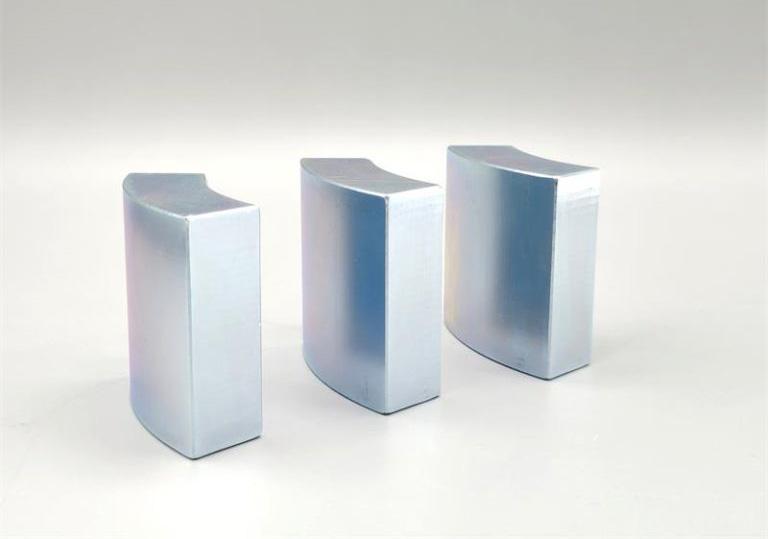In DC motors, carbon brushes and stator magnets are critical components that may wear or deteriorate with use, and stator magnets, in particular, may be demagnetized or damaged, affecting motor performance. Replacing the stator magnets is a critical step in extending the life of the motor and maintaining its performance. This article will detail what to look for when replacing the stator magnets of DC motor carbon brushes.
Select the same magnet material and specifications
The materials of stator magnets include neodymium iron boron (NdFeB), ferrite (Ferrite), aluminum nickel cobalt (AlNiCo) and so on. The magnetic properties of different materials differ significantly, so the replacement should be the same as the original magnet or a similar magnetic properties of the material, in order to avoid adverse effects on the performance of the motor.
High Quality Galvanized Powerful Curved Rare Earth Magnets

The flux density (Flux Density) and coercivity of the new magnet should be consistent with the original magnet. These parameters directly affect the magnetic field strength and torque output of the motor. Choosing the right magnet will ensure that the motor maintains normal operating performance after replacement.
Replacement magnets must match the originals in size and shape, including length, width, thickness and shape. This is especially important because even small dimensional differences can make installation difficult or affect the air gap uniformity of the motor, thereby affecting the efficiency and reliability of the motor.
Magnet polarity remains consistent
When replacing magnets, it is important to make sure that the polarity of the new magnet is the same as the original magnet, otherwise the steering and performance of the motor may be affected.
Mounting position and angle need to be very accurate
The magnet mounting position and angle need to be precisely aligned with the motor stator structure. If the magnet mounting position deviates too much, it will result in an uneven air gap between the stator and rotor, which in turn will affect the efficiency of the motor, and may even produce abnormal noise or vibration.
Avoid magnet bumping
The magnet material is usually fragile, brittle or easily subjected to wear and tear. Careful handling should be exercised during replacement to avoid dropping, bumping or excessive external force to prevent mechanical damage to the magnet.
After magnet replacement, the motor should be comprehensively tested, including speed, steering, noise, temperature rise and other performance indicators. The test can ensure that the motor can operate normally after replacing the magnet, and the performance indexes meet the expected requirements.
Overall, while stator magnets can be replaced, care needs to be taken to ensure compatibility of the new magnet with the original system.
DC motor magnet section;
 China Neodymium And Ferrite Magnets Manufacturer & Supplier
China Neodymium And Ferrite Magnets Manufacturer & Supplier 


